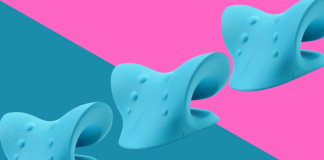
SINGAPORE – The head weighs about 4kg, but when bent forward 3cm, like when a person is peering at a screen, its weight is doubled or tripled.
Musculoskeletal disorders such as neck pain are increasingly prevalent, with prolonged usage of technological devices, sedentary lifestyles and poor ergonomics at work to blame.
In a January 2023 article, the National University Health System (NUHS) said people who frequently use their mobile devices or laptops often have bad posture, which can lead to injuries to their neck and spine in the long term.
“With current lifestyle trends and our societal pre-occupation with our devices and gadgets, it is likely we will see more patients with chronic neck pain in the coming years,” said Dr Alex Teo of the National University Hospital (NUH).
Treatments for chronic neck pain in general range from non-operative options, such as physiotherapy and acupuncture, to more invasive interventions such as injections and surgery, added Dr Teo, who is associate consultant at the University Spine Centre’s Department of Orthopaedic Surgery.
Pain specialist Bernard Lee said some patients he has seen had endured 10 years of chronic pain. They initially relied on over-the-counter medication for some relief.
“A common mistake or misconception is that painkillers can cure pain, when in fact they are merely a Band-Aid solution that suppress our body’s ability to feel or generate pain signals.
“Painkillers do not repair or eliminate the part of the body that is damaged, injured, or causing the pain,” said Dr Lee from Singapore Paincare Centre.
A study by researchers in Singapore, published in 2021 in the Spine medical journal, found that neck pain is increasingly common here. They said that the condition can result in significant disability and loss of quality of life.
The researchers found that among 626 individuals surveyed here, about 23 per cent reported neck pain over the past six months.
In the NUHS article, Adjunct Associate Professor Gamaliel Tan said that the neck and lower spine tend to be in a flexed position when using digital devices and with office work. Over time, this can lead to poor posture and pain.
He added that the pain can be muscular in origin, and this can be corrected by exercises.
“But sometimes it can lead to pinched nerves if the intervertebral discs (jelly) slips out and compresses the nerve leading to the arms and legs. In these cases, medication or even surgery might be needed to unpinch the nerve,” said Prof Tan.

We understand how important it is to choose a chiropractor that is right for you. It is our belief that educating our patients is a very important part of the success we see in our offices.




